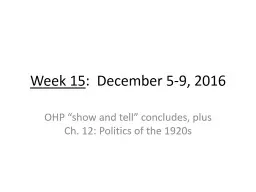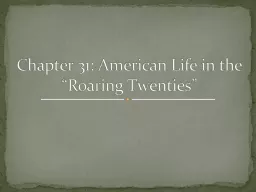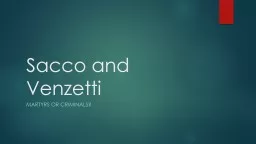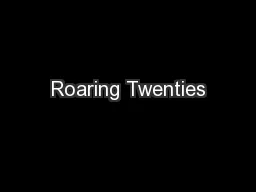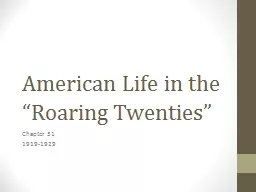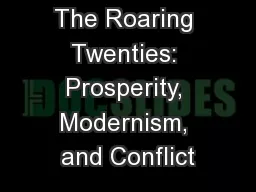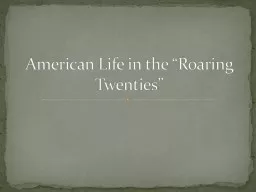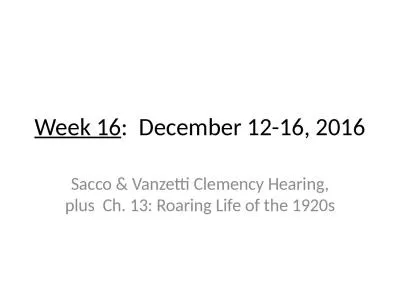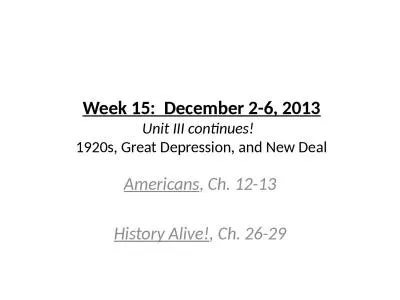PPT-Week 16 : December 12-16, 2016 Sacco & Vanzetti Clemency Hearing, plus Ch. 13: Roaring
Author : stefany-barnette | Published Date : 2019-11-02
Week 16 December 1216 2016 Sacco amp Vanzetti Clemency Hearing plus Ch 13 Roaring Life of the 1920s Homework READ Americans Ch 13 section amp record 5 notes by
Presentation Embed Code
Download Presentation
Download Presentation The PPT/PDF document "Week 16 : December 12-16, 2016 Sacco &a..." is the property of its rightful owner. Permission is granted to download and print the materials on this website for personal, non-commercial use only, and to display it on your personal computer provided you do not modify the materials and that you retain all copyright notices contained in the materials. By downloading content from our website, you accept the terms of this agreement.
Week 16 : December 12-16, 2016 Sacco & Vanzetti Clemency Hearing, plus Ch. 13: Roaring: Transcript
Download Rules Of Document
"Week 16 : December 12-16, 2016 Sacco & Vanzetti Clemency Hearing, plus Ch. 13: Roaring"The content belongs to its owner. You may download and print it for personal use, without modification, and keep all copyright notices. By downloading, you agree to these terms.
Related Documents

